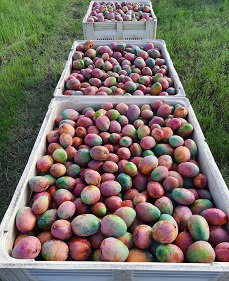 Reflecting on the previous mango season, which produced higher volumes than initially anticipated, Pieter Buys, chairperson of the South African Mango Growers’ Association, notes that Keitt volumes nicely made up where Tommy Atkins fell short.
Reflecting on the previous mango season, which produced higher volumes than initially anticipated, Pieter Buys, chairperson of the South African Mango Growers’ Association, notes that Keitt volumes nicely made up where Tommy Atkins fell short.
Right: newly harvested Keitt mangoes
On late cultivars Kent and Shelly the copious mid-season rains benefited the sizing, which also contributed to a crop that, among members of SAMGA, came to between 70,000 and 80,000 tonnes.
“The informal mango market in South Africa is tremendously big, so I always roughly double the volumes from our SAMGA members to approximate South Africa’s total crop. It would probably have been in the vicinity of 120,000 tonnes this season. I heard of no juicing factory that ran short.”
Only 6.5% of SAMGA members’ mango crop is exported (often by those who also export avocados and citrus, and who can run the mangoes on their citrus packline) but not much to the EU anymore, as it was years ago.
South African mangoes lost their foothold in Europe to West Africa and particularly to Peru, which can supply mangoes – and specifically Kent mangoes - for many months of the year.
One of the things that makes it difficult for South Africa to return to Europe, he remarks, is that the country doesn’t produce very large volumes of Kent, in comparison with Tommy Atkins and Keitt. Over the past years many growers have also replaced their Kent with Westfalia’s Shelly mango.
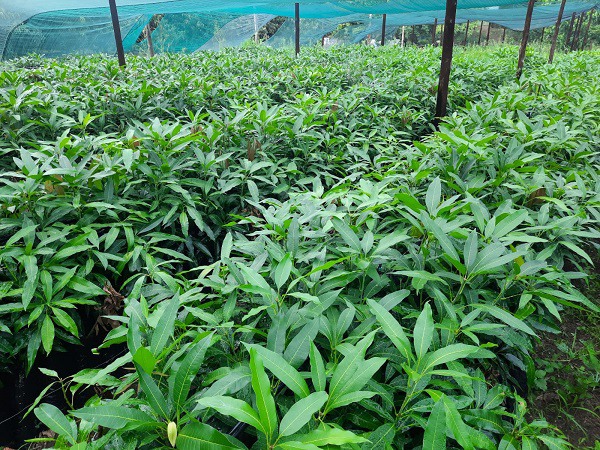
In their nursery they grow all of the rootstocks and scions, grafting themselves, of seven mango cultivars they require for their own plantings
Joa mango leads customers by the nose
Pieter tells the story of a buyer at the Tshwane municipal market, some years ago, who followed the perfume of a pallet of their Joa mangoes all the way from the entrance to the market agent. She promptly bought the entire pallet and instructed the market agents to keep every pallet of Joa mangoes for her for the rest of the season.
Such is the attraction of the South African-bred Joa mango which draws buyers to their farm in Deer Park, close to Tzaneen, every week, and they haven’t sent any to the municipal markets for a number of years.
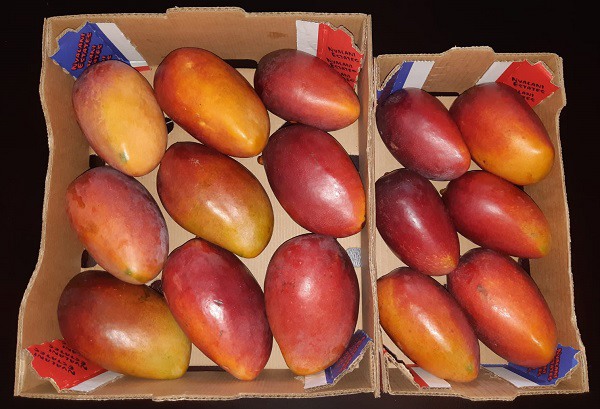
Joa mangoes in a 4kg and a 2kg carton
The Joa needs to be selectively picked several times a week, making it a labour-intensive cultivar. It came out of the Agricultural Research Council’s Tropical and Subtropical Crops Division’s breeding programme in Nelspruit, Mpumalanga, and is not, to Pieter’s knowledge, commercially grown elsewhere in the world.
Pieter saw some Joa trees in Florida’s Fairchild Botanical Garden where he delivered an address on the South African mango industry in 2018, but he was told that they’re not flourishing. He knows a mango farmer with some in Spain, where they similarly don’t shine as, he says, they do in the sandy soils of Nyalani Estate.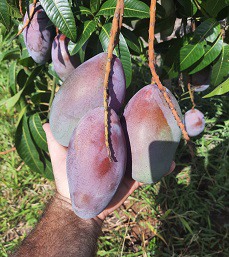 Even within South Africa, Joa trees have been removed from Hoedspruit orchards because they don't pack as easily due to their elongated, flattened shape.
Even within South Africa, Joa trees have been removed from Hoedspruit orchards because they don't pack as easily due to their elongated, flattened shape.
Right: Joa before it has fully coloured up
It is mostly unknown outside South Africa where it is only suited to fresh sales. Its exceptionally high sugar content browns the flesh when it is dried, ruling it out from processing.
“For us, a Joa is a wonderful thing. Admittedly, it doesn’t give the largest yield, but its perfume, and the flavour, and the appearance of our Joa is simply fantastic.”
They have expanded with young Joa orchards that came into production last year, to bring their Joa orchards to 20 hectares. Not the biggest block in the country but unsurpassed in quality, Pieter says. "It also stores like a dream, up to a month in the fridge with no side-effects.”
Who are the lucky recipients of this niche mango?
“Informal buyers with fruit stalls or small shops come in droves to buy up our entire Joa crop. Because it’s a bit smaller than a Tommy Atkins, and because they tend to sell their mangoes loose, they get a greater return from a crate of Joa mangoes. People just love this mango, its flavour and its fragrance.”
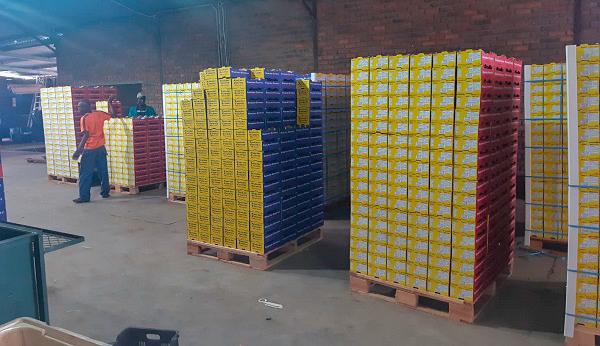
Food price inflation not even full reflection of production inflation
Nyalani Estates export no mangoes themselves (although they do deliver to mango processors whose dried mango ends up in many different countries).
Nor do they supply any retailers (although he has been approached and it might change) and they haven’t sent to any of the municipal markets for a few years now, partly as a result of the rise in packaging costs – an empty 4kg mango carton costs around R8 to R8,50 (0.42 euro) these days.
“I listen on the radio to consumers complaining about 14% food inflation – not that we’re seeing a similar increase in our prices, but even if we were, that would be a mere drop in the ocean compared to how our production expenses have gone up."
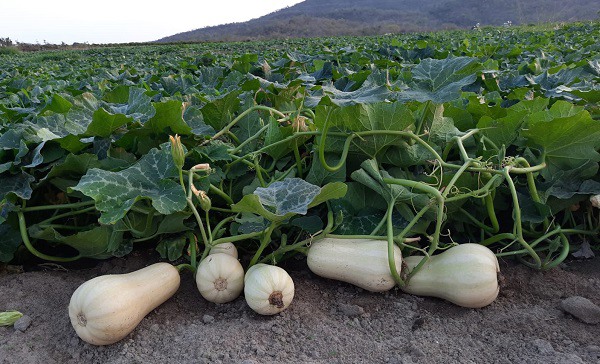 They plant butternuts for thirty weeks of the year
They plant butternuts for thirty weeks of the year
He continues: "The cost of our crop protection products has exactly doubled over the past year, and it’s not that we’ve bought more or that we used used more. Over about eighteen months, the fertilizer 2:3:4 went up from R7,500 [370 euros] for a tonne to almost R23,000 [1,1300 euros]. It’s since come down but it’s still twice as expensive as before Covid.”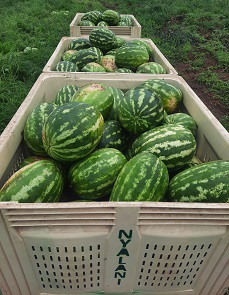 South Africa’s first Covid lockdown in March 2020 almost brought down the farm.
South Africa’s first Covid lockdown in March 2020 almost brought down the farm.
Right: they also periodically plant watermelons, cabbage and Hubbard squash
“At that point we were a week into our melon harvest and suddenly we were faced with melons we couldn’t sell. I can’t tell you how many tonnes of melons we ploughed into the soil. We had some at the Nelspruit market which eventually went to the chimpanzee sanctuary in the Lowveld. I just hate to see food go to waste and planting melons is expensive – back then, the seed cost around R14,500 per hectare,” he adds: “It was touch and go for us then.”
Apart from mangoes, they plant butternut per buyers’ requirements for 30 weeks of the year and now and then (when he feels like hard work, Pieter quips) they plant sweet potatoes.
Wild zones left unplanted
The area where they farm is also home to wildlife, an aspect for which Pieter, who has some game farming experience, has sympathy.
“We are in the fortunate position that we don’t need to plant up our entire farm. There are still green zones on the farm, wetlands and ditches and some unplanted mountainous areas.”
Vervet monkeys are all around, but they are kept out by electric fencing (slightly lifted from the ground to allow tortoises to pass unharmed) and besides, Pieter observes, the natural veld has a good population of wild-sown mango and guava trees, so there’s no shortage of easy pickings for the fruit-lovers.
The original habitat ensures a healthy pollinator population and they no longer need to bring in bees.
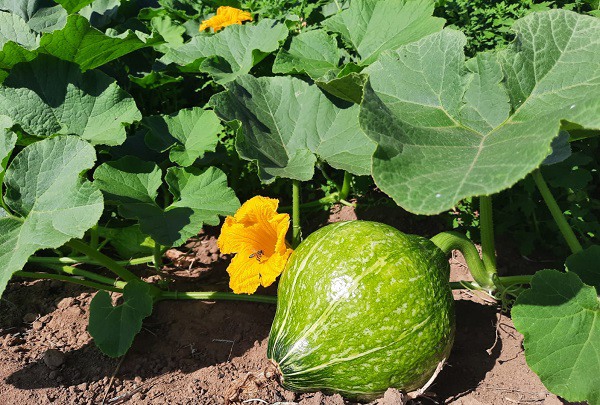
Bee enters a Hubbard squash flower
Mango farmers don’t yet have the wide range of bio-agents registered as other sectors like citrus have, but he expects that natural pest control will be of increasing importance in future.
Allowing space for wildlife does, however, sometimes have its drawbacks, Pieter observes.
After a particularly severe fire in 2019 on surrounding farms, which fortunately couldn’t jump their firebreaks, the porcupine population on the farm just exploded, he says, as porcupines found themselves surrounded by burnt bush and no food. They ringbarked many young mango trees and foraged on vegetable seedlings on the farm; he’s had to replant the young trees. Eventually, as the vegetation recovered, the porcupine population has stabilized.
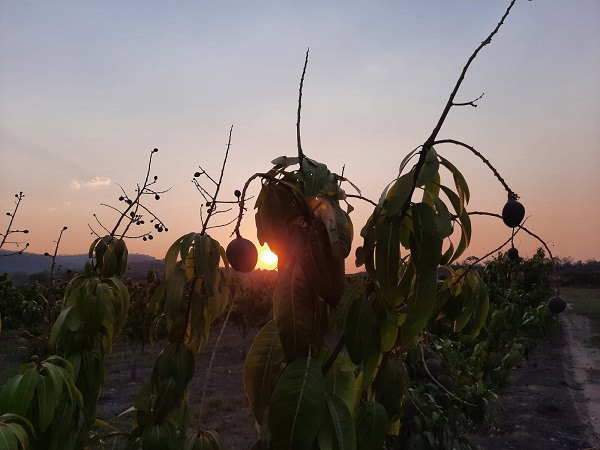
Pieter takes the cons along with the pros of a healthy ecosystem co-existing with the orchards on the farm.
“When nature is in balance it feels to me like our orchards are faring better,” he remarks.
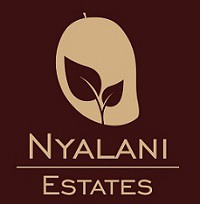 For more information:
For more information:
Pieter Buys
Nyalani Estates
Email: [email protected]
https://www.instagram.com/nyalani.estates/










